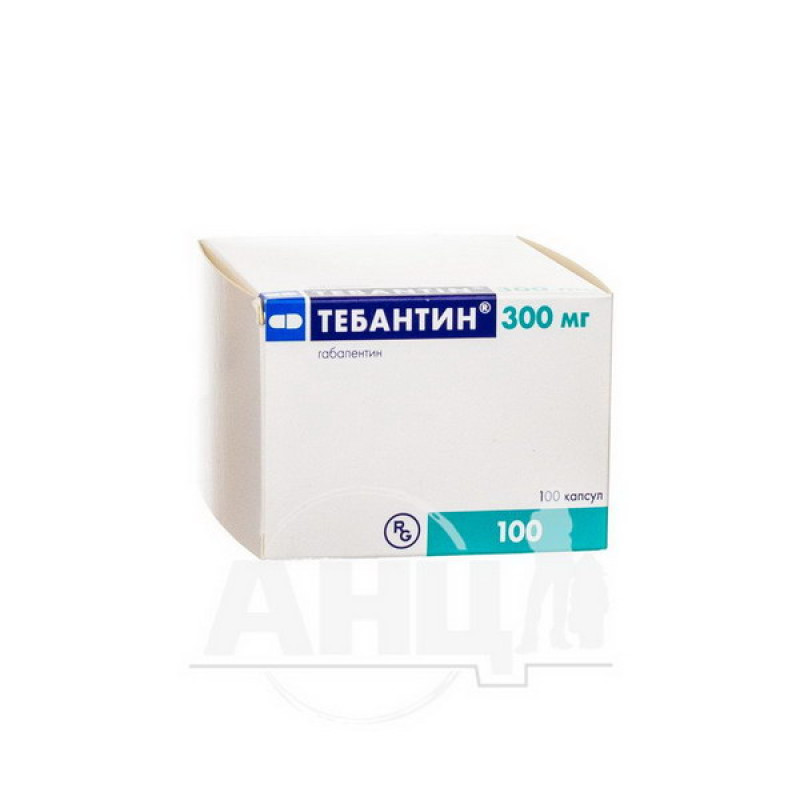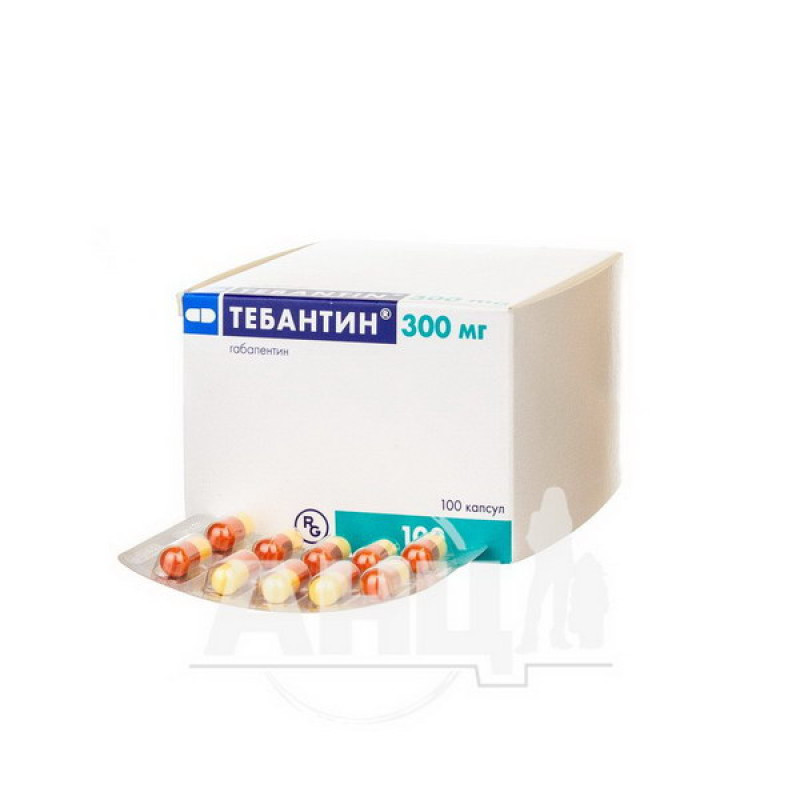Tebantin capsules 300 mg No. 100

Pharmacological properties
Pharmacodynamics. The exact mechanism of action of gabapentin is unknown. Gabapentin is structurally related to the neurotransmitter GABA, but its mechanism of action differs from a number of other active substances that interact with GABA synapses, including valproate, barbiturates, benzodiazepines, GABA transaminase inhibitors, GABA uptake inhibitors, GABA agonists, and GABA prodrugs. In vitro studies with radiolabeled gabapentin have described a novel peptide-binding site in the rat brain, including the neocortex and hippocampus, which may be relevant to the anticonvulsant and analgesic effects of gabapentin and its structural derivatives. The binding site of gabapentin has been identified as the alpha-2-delta subunit of voltage-gated calcium channels.
Gabapentin at clinical concentrations does not bind to other common drug or neurotransmitter receptors in the brain, including GABA A, GABA B, benzodiazepine, glutamate, glycine, or N-methyl-D-aspartate receptors.
Gabapentin does not interact with sodium channels in vitro, and thus differs from phenytoin and carbamazepine. Gabapentin partially reduces responses to the glutamate agonist N-methyl-D-aspartate (NMDA) in some in vitro test systems, but only at a concentration of 100 μM (100 μM), which is not achieved in vivo. Gabapentin slightly reduces the release of monoamine neurotransmitters in vitro. Gabapentin administration to rats leads to an increase in GABA turnover in several brain regions in a manner similar to sodium valproate, although in other brain regions. The significance of these various effects of gabapentin for anticonvulsant action remains to be established. In animals, gabapentin readily penetrates the brain and prevents seizures from maximal electric shock, chemical convulsants, including GABA synthesis inhibitors, and in genetic models of seizures.
Clinical trials of adjunctive therapy for partial onset seizures in children aged 3-12 years showed a numerically greater but statistically insignificant difference in the 50% response rate in favor of gabapentin compared with placebo. Additional post-hoc analyses of responder rates by age showed no significant effect of age using either continuous or binary variables (age groups 3-5 years and 6-12 years). The results of this analysis are presented in Table 1.
Table 1. Response rates (≥50% improvement) by treatment category and group. MITT population *| 6 | 4/21 (19.0%) | 4/17 (23.5%) | 0.7362 |
| 6-12 | 17/99 (17.2%) | 20/96 (20.8%) | 0.5144 |
* MITT (modified population of patients who took at least one dose of a drug) includes all patients randomly selected into the study who were able to complete seizure diaries to a sufficient extent for assessment for 28 days in the initial and double-blind phases.
Pharmacokinetics. Absorption. After oral administration, C max of gabapentin in blood plasma is reached after 2-3 hours. The bioavailability of gabapentin (fraction of the adsorbed dose) tends to decrease with increasing dose. The absolute bioavailability of a 300 mg capsule is about 60%. Food, including a high-fat diet, does not have a clinically significant effect on the pharmacokinetics of gabapentin.
The pharmacokinetics of gabapentin are not altered by repeated dosing. Although plasma concentrations of gabapentin in clinical studies generally ranged from 2 to 20 μg/mL, these concentrations do not predict safety or efficacy. Pharmacokinetic parameters are presented in Table 2.
Table 2. Summary of mean (% CV) steady-state pharmacokinetic parameters after administration of inThere are no reviews for this product.
There are no reviews for this product, be the first to leave your review.
No questions about this product, be the first and ask your question.



